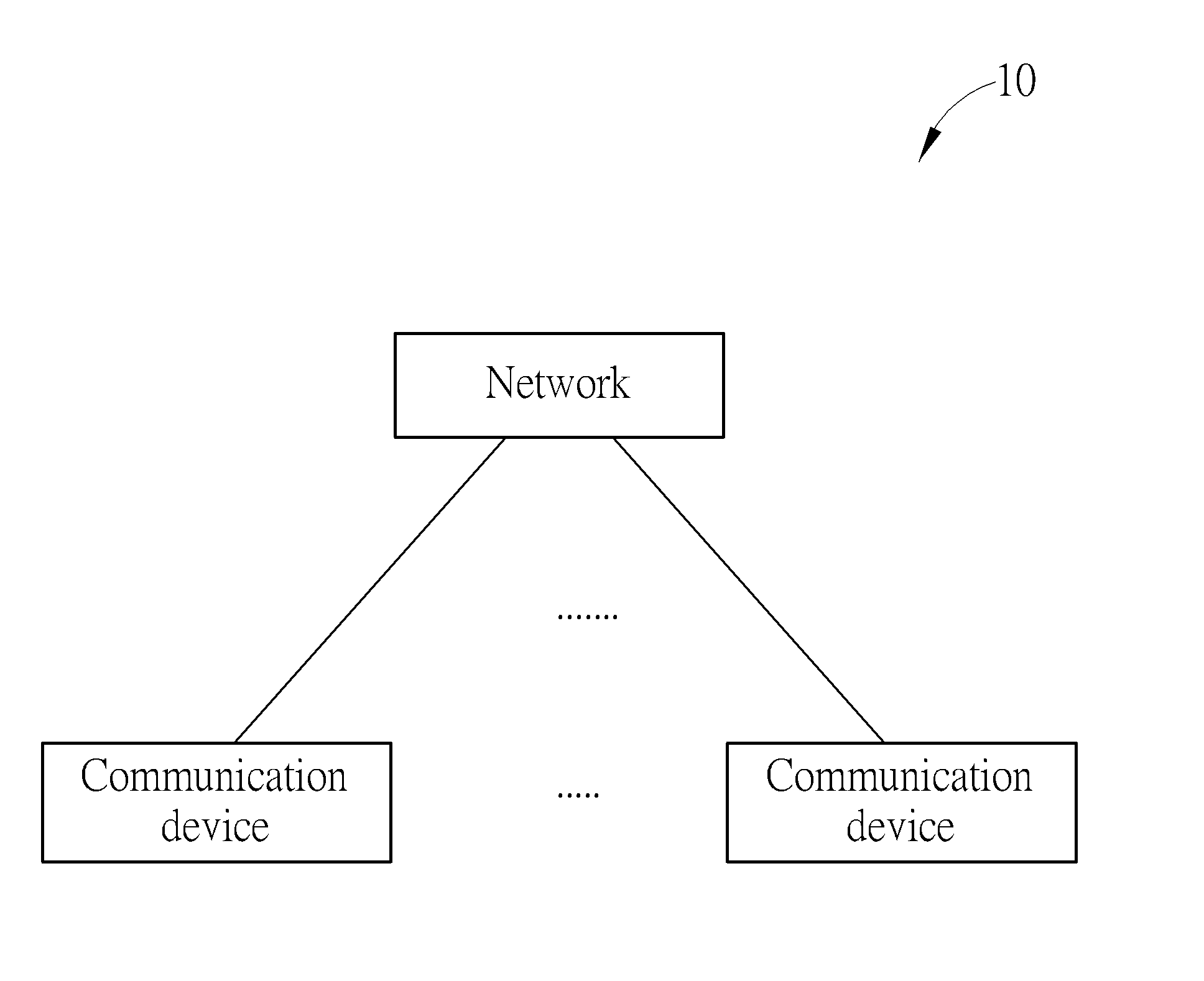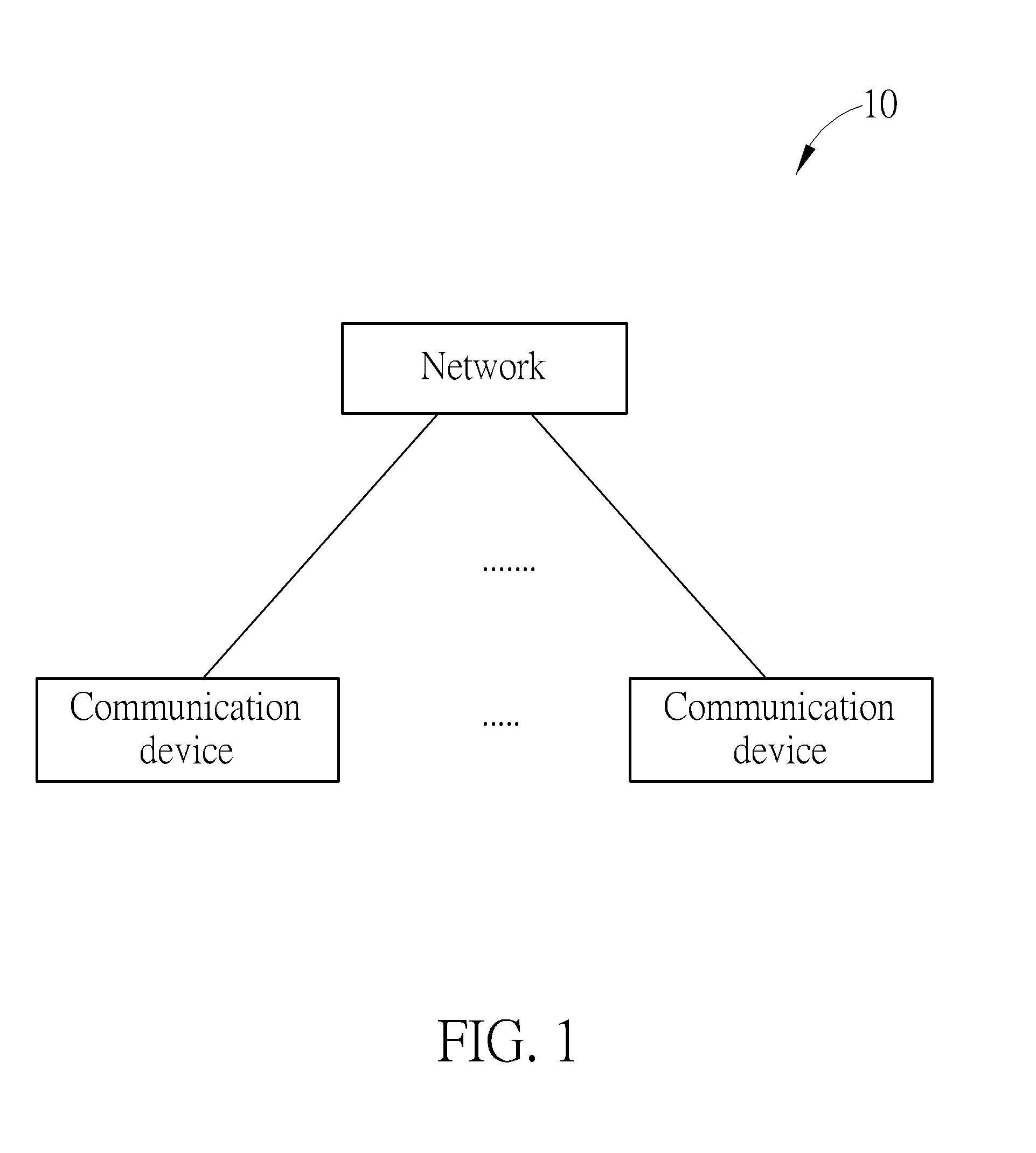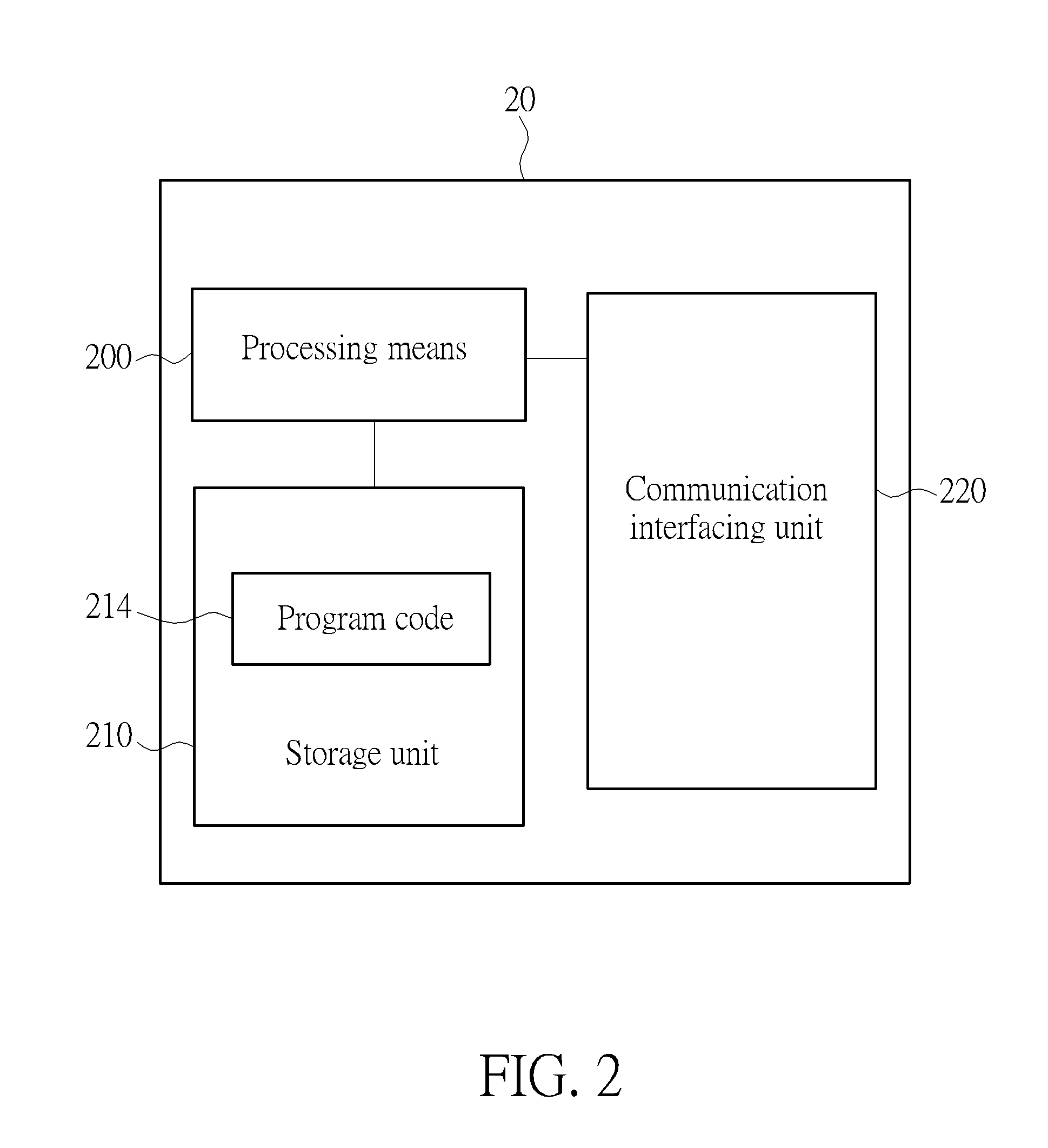Method of Radio Network Temporary Identifier Allocation in Dual Connectivity
a radio network and temporary identifier technology, applied in the direction of wireless commuication services, transmission path sub-channel allocation, connection management, etc., can solve the problems of both data transmission failure, enbb>2/b> cannot receive data correctly, and also problems in downlink communication
- Summary
- Abstract
- Description
- Claims
- Application Information
AI Technical Summary
Benefits of technology
Problems solved by technology
Method used
Image
Examples
first embodiment
[0031]Take an example based on the process 30. Please refer to FIG. 4, which is a message sequence chart of a first embodiment according to the present invention. First, the UE has a RRC connection to a celll of the eNB1 and has a C-RNTI1 with the eNB1. In order to realize dual connectivity (namely the UE can communicate with the eNB1 and eNB2 simultaneously), the eNB1 transmits a cell addition request to the eNB2, to request for adding a cell2 of the eNB2 for the UE (step 400). The eNB2 transmits a cell addition response including a C-RNTI2 assigned by the eNB2 to the eNB1, to respond to the cell addition request (step 402). The eNB1 generates and transmits a RRC message including the C-RNTI2 assigned by the eNB2 to the UE after receiving the cell addition response (step 404). The UE transmits a RRC response message to acknowledge the reception of the RRC message (step 406). Note that, the RRC message contains at least one of physical cell identity and carrier frequency to identify...
third embodiment
[0034]Alternatively, after the UE obtains the C-RNTI2 with the eNB2, the UE may perform a contention based random access procedure to the eNB2 if the contention based random access procedure is required by the eNB2 for uplink time alignment. Please refer to FIG. 6, which is a message sequence chart of a third embodiment according to the present invention. The UE transmits a random access preamble in RACH resource location to the eNB2 (step 608), wherein the random access preamble is selected by the UE from a set of preambles. The set of preambles and the RACH resource location may be configured in the RRC message or in system information broadcasted by the eNB2. The UE receives a random access response from the eNB2 in response to the random access preamble (step 610), wherein the random access response contains an uplink grant and a random access preamble identifier which corresponds to the selected random access preamble. The UE transmits a scheduled transmission (i.e. MAC PDU) co...
fourth embodiment
[0045]In detail, please refer to FIG. 8, which is a message sequence chart of a fourth embodiment according to the present invention. First, the UE has a RRC connection to a celll of the eNB1 and has a C-RNTI1 with the eNB1. In order to realize dual connectivity, the eNB1 transmits a cell addition request to the eNB2, to request for adding a cell2 of the eNB2 for the UE (step 800). The eNB2 transmits a cell addition response including RACH configuration for random access procedure for the UE to the eNB1, to respond to the cell addition request (step 802). The eNB1 or the eNB2 generates and transmits a RRC message (e.g. RRCConnectionReconfiguration) for configuring the cell2 of the eNB2 to the UE after receiving the cell addition response (step 804). Note that, the RRC message contains at least one of physical cell identity and carrier frequency to identify the cell2. The physical cell identity and carrier frequency may be transmitted by the eNB2 to the eNB1 or may be generated by th...
PUM
 Login to View More
Login to View More Abstract
Description
Claims
Application Information
 Login to View More
Login to View More - R&D
- Intellectual Property
- Life Sciences
- Materials
- Tech Scout
- Unparalleled Data Quality
- Higher Quality Content
- 60% Fewer Hallucinations
Browse by: Latest US Patents, China's latest patents, Technical Efficacy Thesaurus, Application Domain, Technology Topic, Popular Technical Reports.
© 2025 PatSnap. All rights reserved.Legal|Privacy policy|Modern Slavery Act Transparency Statement|Sitemap|About US| Contact US: help@patsnap.com



